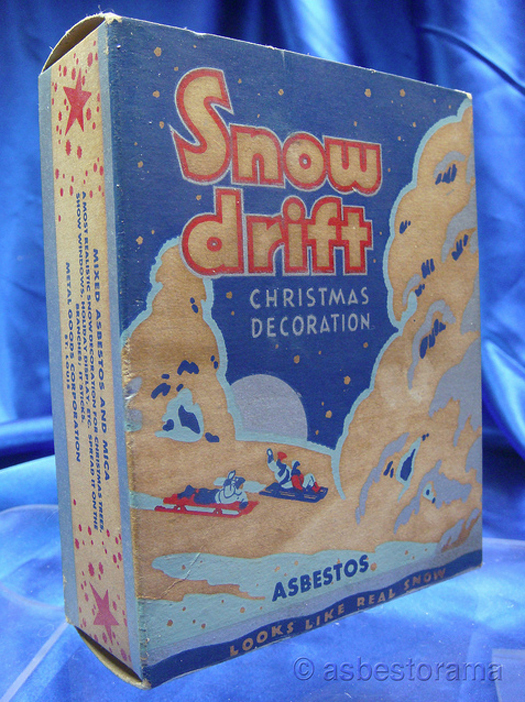
Have a very, merry Christmas with poison snow. Fun for the entire family.
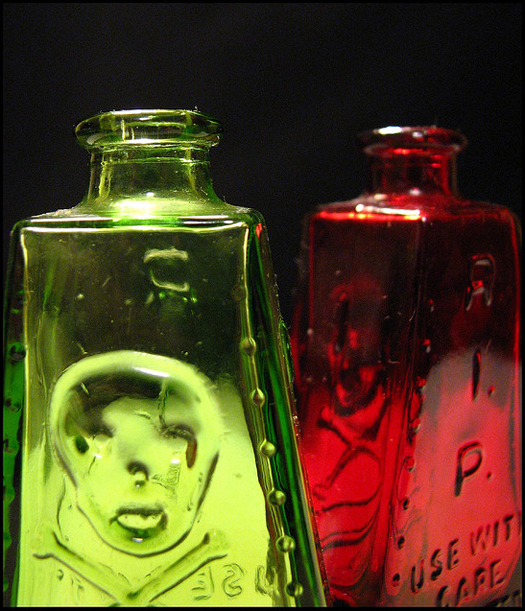
Two poison bottles made from carnival glass, from Laurel714 photostream.
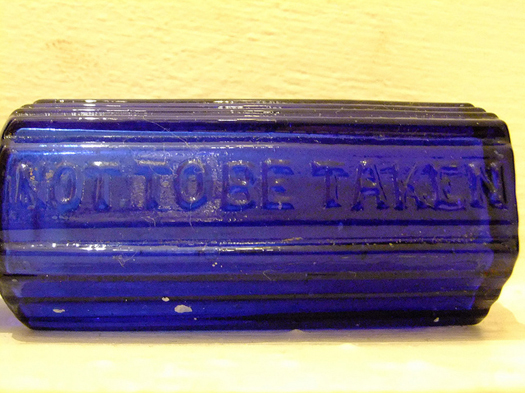
Poison bottles were often colors other than clear, to differentiate them for real medicine. (from Nic Dempsey’s photostream)
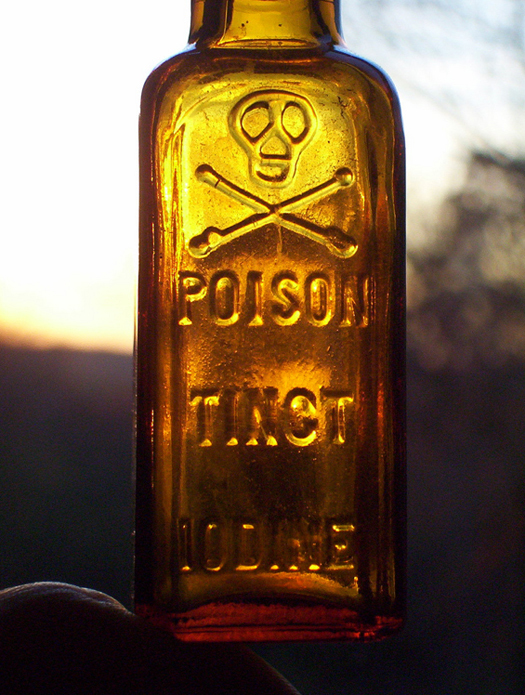
Brown or amber glass poison bottle from tmac02892’s photostream.
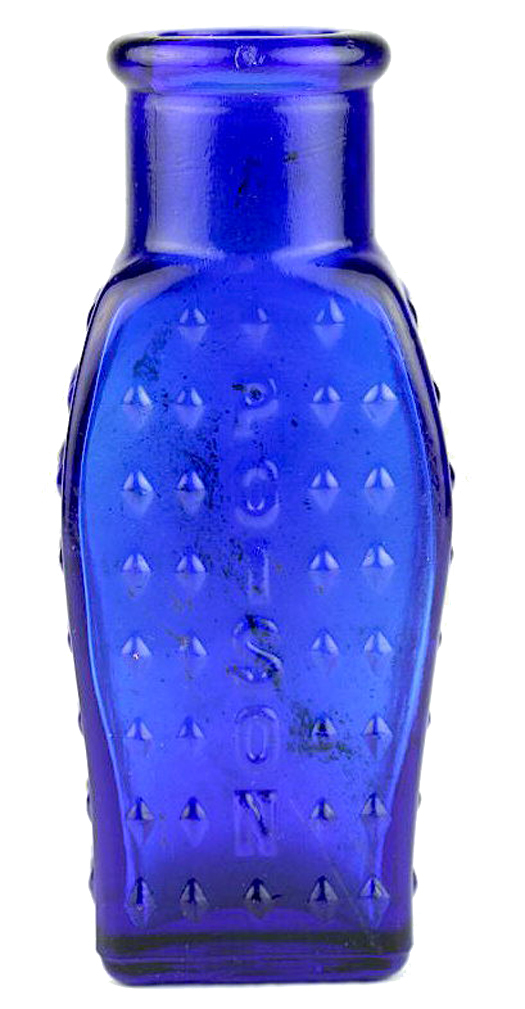
Cobalt blue coffin front bottle.
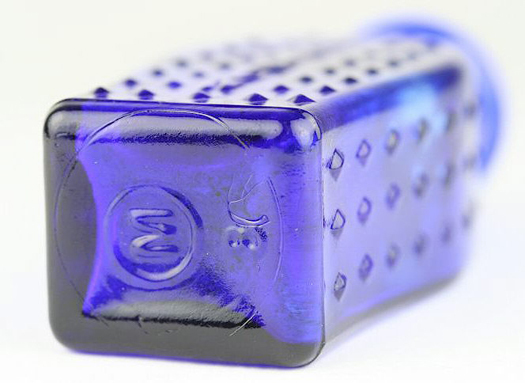
Bottom of same poison bottle, showing mark on bottom for the Maryland Glass Company.
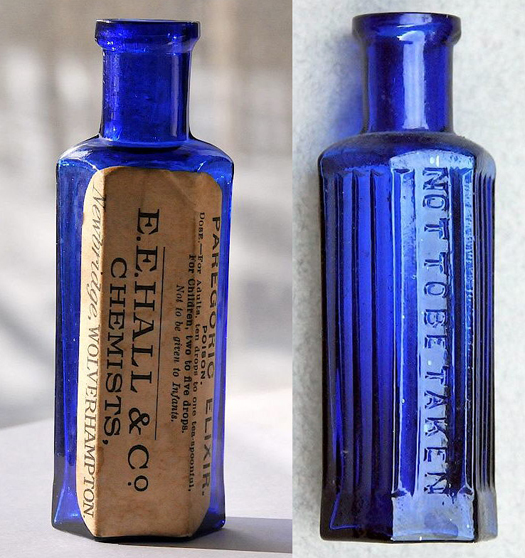
The label notes that the product was Paregoric Elixir made by E. E. Hall & Co. of Wolverhampton (central England), used to “calm fretful children.”
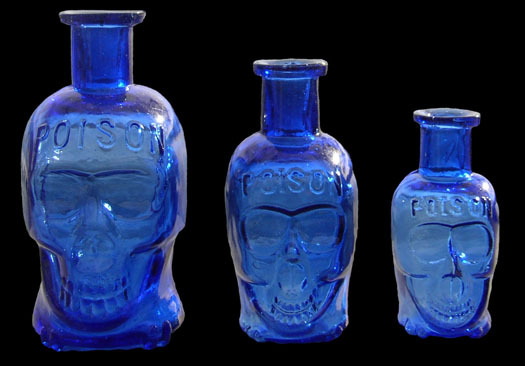
Gorgeous set of three skull shaped poison bottles from the American Poison Bottle Collectors Association, collection of Joan Cabaniss.
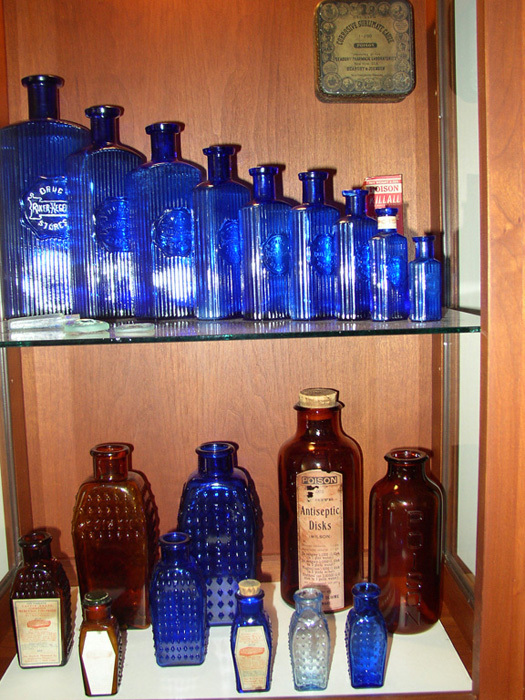
A nice collection of poison bottles, from the American Poison Bottle Collectors Association, collection of Joan Cabaniss.
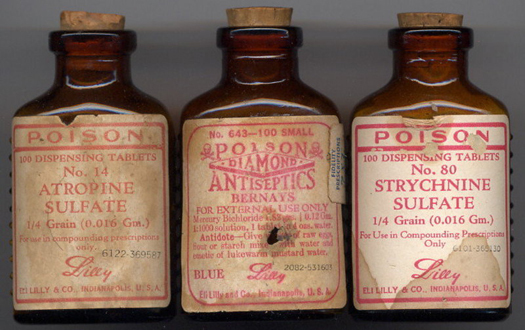
Eli Lilly amber poison bottles; corked, three-sided, embossed and ribbed.
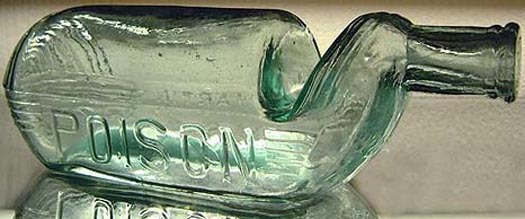
Aqua-colored Martin’s poison bottle from England with a curious “U” bend in the shoulder.
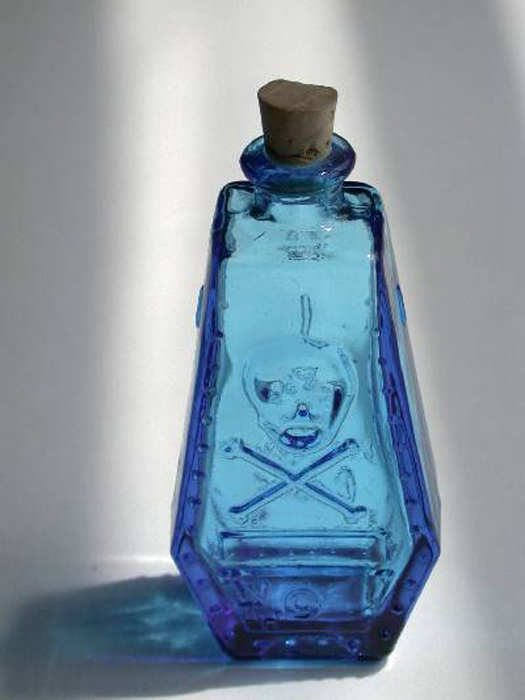
Light blue coffin bottle with skull and crossbones, with “hobnails” and “hinges”.
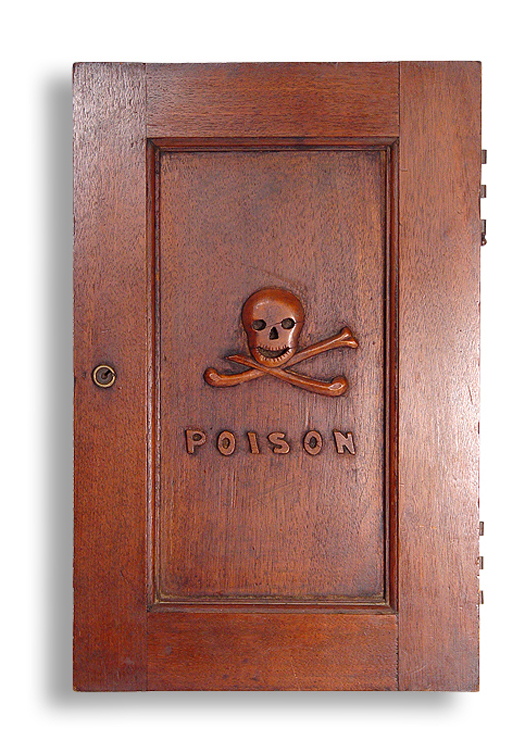
Beautiful wood poison cabinet with skull and crossbones.
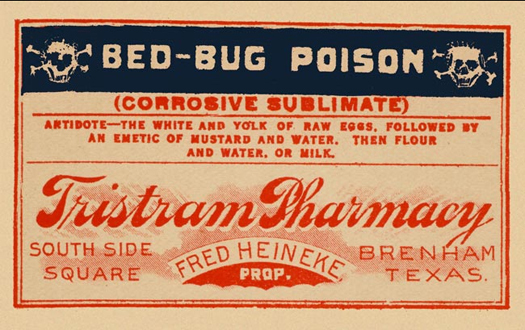
Bed bug poison.
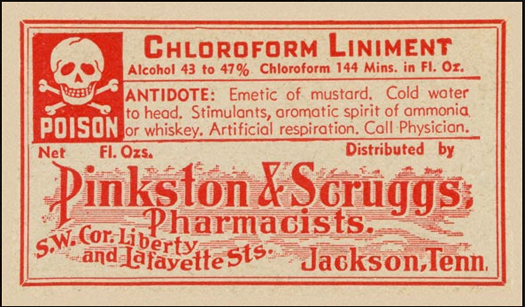
Chloroform label, 19th century.
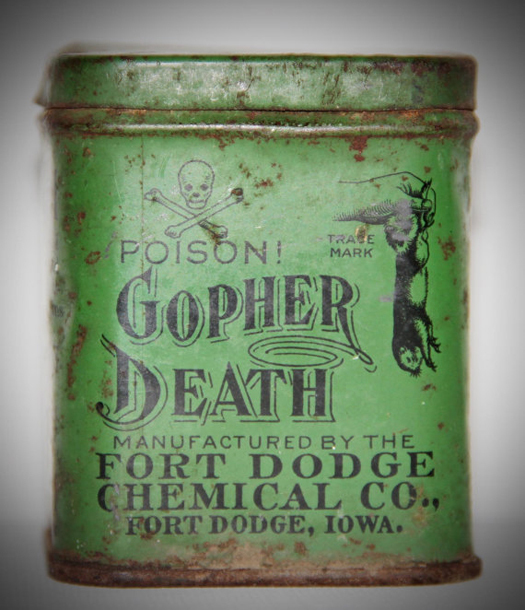
Gopher killer, made by Fort Dodge Chemical Company.
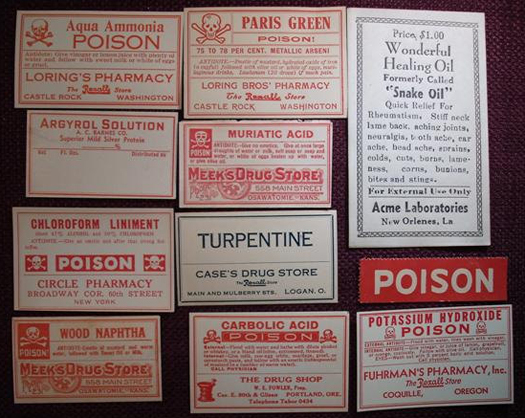
Various vintage poison labels.
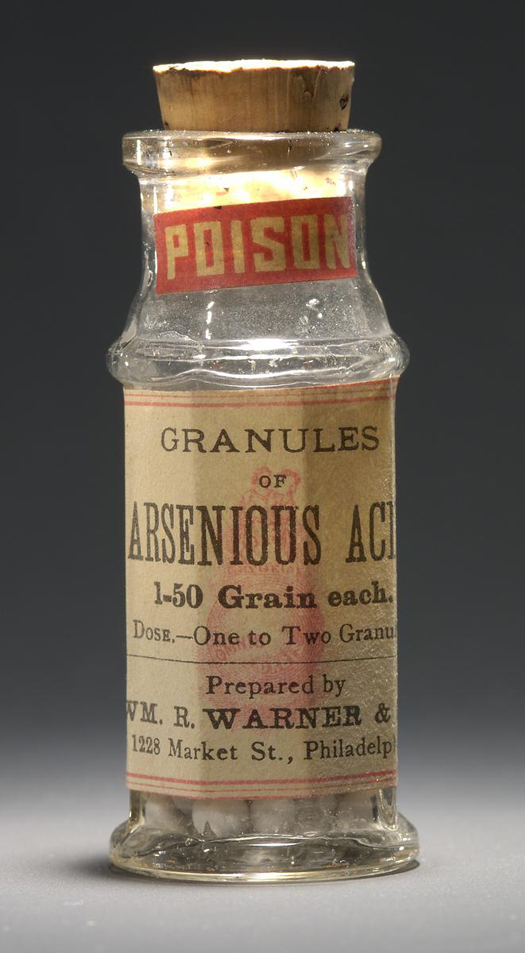
Arsenic-based medicine, Wm. R. Warner & Co., about 1900. National Museum of American History, Behring Center, Smithsonian Institution.
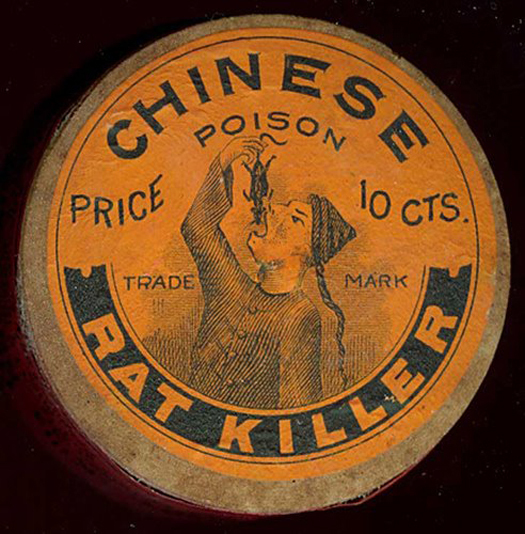
Nineteenth century Chinese rat poison.


Comments [1]
11.05.12
11:12